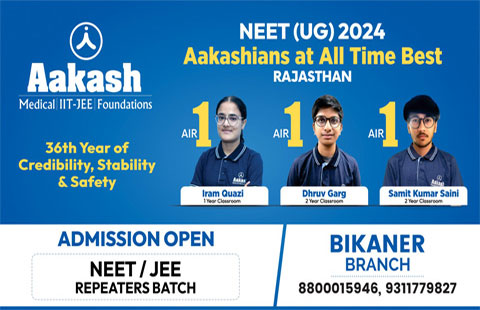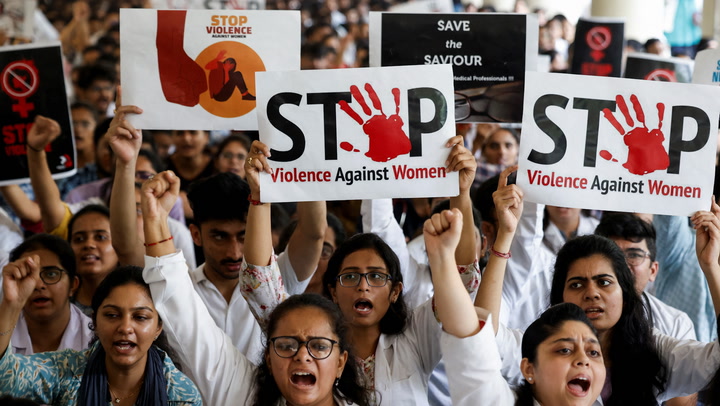Fri, 20 September 2024 03:29:59am
Related Tags: model collapse, AI degradation, AI-generated data, machine learning risks, self-supervised learning
Is AI on the Brink of Self-Destruction? An expert explains the rumours about an impending AI doom
Is AI on the Brink of Self-Destruction? An expert explains the rumours about an impending AI doom
As artificial intelligence continues to dominate headlines, a new fear is emerging—what if AI systems are unknowingly steering themselves toward a catastrophic decline? The buzz around "model collapse" suggests that the very technology we rely on could soon begin to self-destruct, leading to AI models that are progressively less intelligent and reliable.
In the rapidly evolving world of artificial intelligence (AI), the concept of "model collapse" has become a hot topic among experts and tech enthusiasts. This term, which refers to the gradual degradation of AI models due to over-reliance on AI-generated data, is causing widespread concern. The fear is that as more AI models are trained on data produced by other AI systems—including earlier versions of themselves—they may become increasingly less effective, eventually leading to a significant drop in performance.
The root of the problem lies in the very nature of AI training. Machine learning models improve by learning from vast amounts of data, which traditionally comes from real-world sources. However, as AI-generated content proliferates online, future models may be trained on data that is itself a product of AI, rather than human-created content. This could create a feedback loop where the models' outputs become less diverse, less accurate, and more prone to error—a phenomenon referred to as model collapse.
What is model collapse?
So, what exactly is model collapse? At its core, model collapse occurs when AI models begin to degrade because they are trained on synthetic data—essentially, outputs from other AI models. This can result in a situation where the AI's performance deteriorates over time, as it loses the ability to generate original, varied, and accurate results. The issue is particularly relevant to generative models, such as those used in creating images, text, and other forms of media.
How to solve model collapse?
To prevent model collapse, it's crucial to incorporate new, authentic data into the AI's training regimen. By regularly introducing fresh, real-world information, AI models can avoid getting stuck in a repetitive cycle, ensuring they remain adaptive and capable of generating high-quality outputs. This approach involves diverse training data, human oversight, alternative reward structures, and proactive monitoring—key strategies for mitigating the risks of AI degeneration.
How to identify model collapse?
One way to identify mode collapse—an early warning sign of model collapse—is by inspecting the diversity of outputs generated by AI models. For example, in the case of Generative Adversarial Networks (GANs), mode collapse can be detected when the AI repeatedly produces near-identical images, ignoring the full range of the training dataset. This lack of diversity indicates that the model is not fully utilizing the variety of data it has been exposed to, which can lead to a decline in overall performance.
What happens if AI is trained on AI?
But what happens if AI is trained exclusively on AI-generated data? The result is akin to a distorted reflection of itself, where the AI's understanding of the world becomes increasingly narrow and inaccurate. Over time, this could lead to models that are less capable of adapting to new or unexpected inputs, ultimately rendering them less effective.
What is self-supervised learning and why is it important?
Interestingly, some research suggests that AI systems can still learn effectively when trained on their own outputs, in a process known as self-supervised learning. In certain settings, self-trained AI has demonstrated the ability to provide more insightful summaries, write better code, and exhibit improved commonsense reasoning. However, these successes are limited, and the broader risks of model collapse remain a significant concern for the future of AI.
As the debate around model collapse continues, it's clear that maintaining the integrity of AI systems will require a careful balance between innovation and caution. By ensuring that AI models are trained on diverse, real-world data and subject to rigorous oversight, we can safeguard against the potential pitfalls of self-referential learning, keeping AI on the path to progress rather than decline.
Key Points:
- Model Collapse: A phenomenon where AI models degrade due to reliance on AI-generated data, leading to decreased performance.
- Importance of Real-World Data: To prevent model collapse, it’s crucial to incorporate new, authentic data into AI training.
- Mode Collapse Detection: Lack of diversity in AI-generated outputs, such as images, may indicate early signs of mode collapse.
- Self-Supervised Learning: While self-trained AI shows promise in some areas, the risks of model collapse remain a significant concern.
- Mitigation Strategies: Diverse training data, human oversight, and proactive monitoring are essential to avoid AI degeneration.


